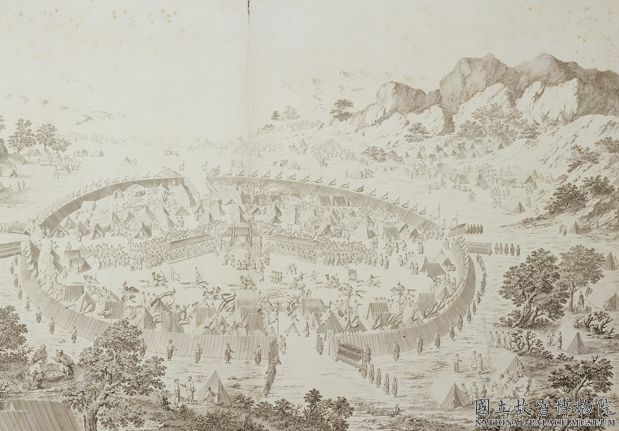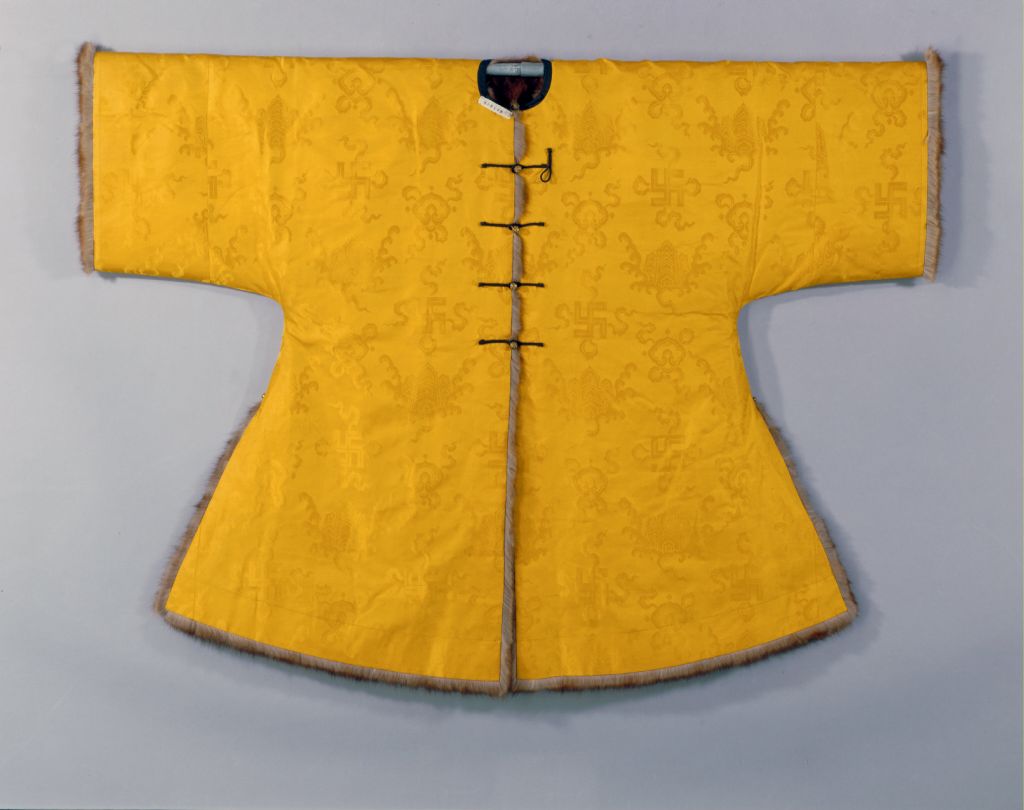[Embroidered Celestial Bamboo and Narcissus Figure Axis]
Embroidered Celestial Bamboo and Narcissus Figure Axis, Qingdaoguang, vertical 61 cm, horizontal 37 cm. The old collection of the Qing Palace
This axis is based on images such as Tianzhu, Narcissus, Shoushi, Ganoderma lucidum, and hibiscus. Shoushi was embroidered with three blue threads, Narcissus leaves and Tianzhu leaves were covered with needles, and water ripples, leaf veins, and the supporting branches of Tianzhu flowers were embroidered with rolling needles or connecting needles. The most distinctive feature in the picture is the rich variety of flower expression techniques: the petals of narcissus and hibiscus are dotted with thick pigment to form beads, the stamens of narcissus are used with seed needles, and the flower of Tianzhu is used with red coral beads for bead embroidery. The flexible use of different techniques makes objects vivid and colorful
Narcissus is one of the few flowers that blooms in winter, and the word “immortal” for narcissus is the same as the word “immortal” for immortals. The word “bamboo” for Tianzhu is homophonic with “wish”. Both ganoderma lucidum and longevity stone are symbols of longevity in traditional Chinese culture. The auspicious patterns combined by these four objects imply the meaning of “immortal wishing for longevity”, which are hung on the wall of the room to be pleasing to the eye and to the heart, and also contain the meaning of praying for longevity.
![图片[1]-Embroidered Bamboo and Narcissus Axis-China Archive](https://chinaarchive.net/Warring States period/tapestry and embroidery/14177[1024].jpg)

![[Qing Dynasty] British female painter—Elizabeth Keith, using woodblock prints to record China from the late Qing Dynasty to the early Republic of China—1915-China Archive](https://chinaarchive.net/wp-content/uploads/2022/11/image-191x300.png)



